The Rosebud Cafe
Introduction
Text-to-speech Audio
This is the site of of the Historic Rosebud Cafe, the birthplace of the American musical tradition, ragtime. Located at the corner of Market and Clark, the Saloon was a entertainment space that gained unprecedented traction in the contemporary music scene. This site has been pinned at 2220 market street for one reason -this is its historically accurate position, and is not to be confused with its recreation in the basement of Scott Joplin Historic Site, a few blocks north of its original location. Rosebud hosted the most acclaimed ragtime composers from the period, and was where the very first piece of ragtime by a Black artist was composed. The saloon has been historically recognized as an "establishment that nurtured and showcased" the remarkable skill of Black, ragtime composers. Without the Rosebud Cafe, ragtime music would not be known as the glamorous, influential musical genre it is now known as today.
Images
The Rose Bud Cafe
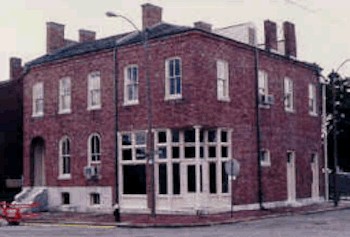
Attempted recreation of a bar room
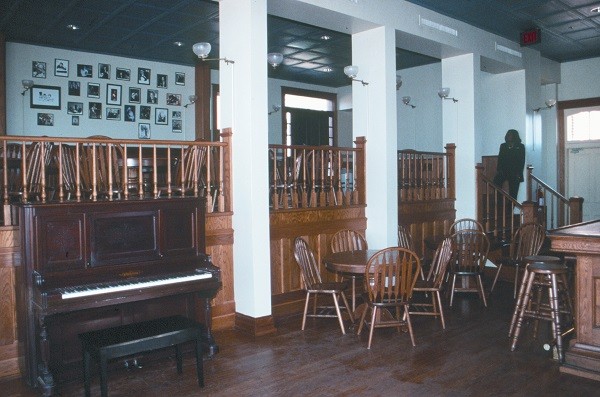
The cover page of Turpin's "Harlem Rag"
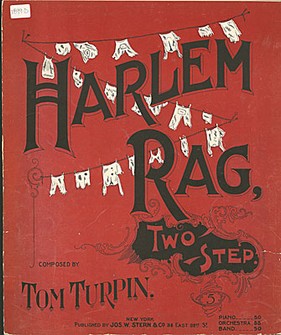
The Scott Joplin Historic Site located just north of where the Cafe was.
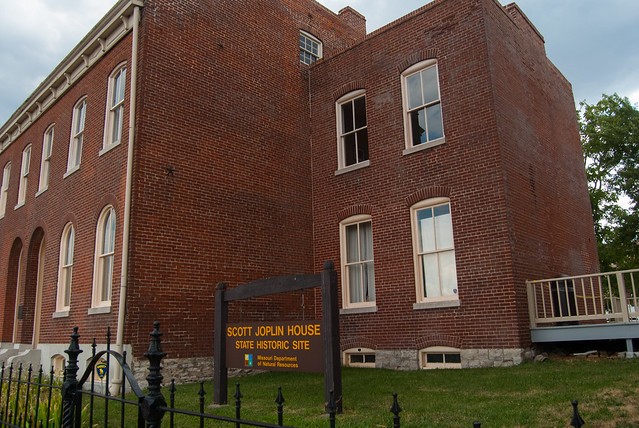
Scott Joplin's "Entertainer," Appearing in the critically acclaimed move "The Sting."
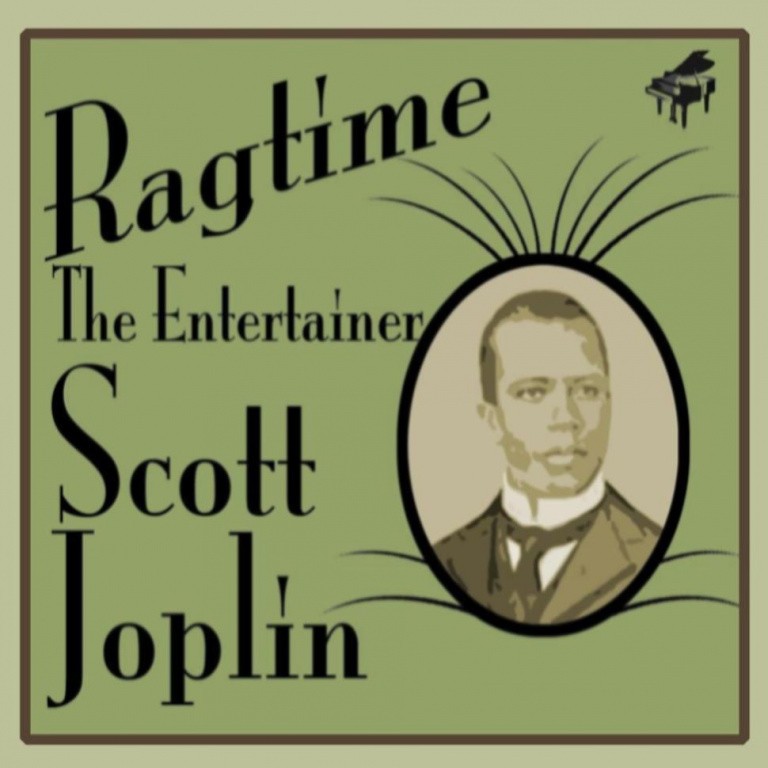
Backstory and Context
Text-to-speech Audio
As a naturally inclined entrepreneur, Tom Turpin, the founder of the Cafe, moved his family from his hometown Savanah, Georgia to Saint Louis so that they could seek a new life. His father and proprietor, John Turpin, had already opened multiple establishments across downtown St. Louis, and is who influenced Tom to open the Rosebud Cafe. After having success with Rosebud, Turpin would go on to found multiple other businesses with his brother Charles including: theatres, gambling halls and nightclubs. Each of these businesses was located in an area known as Chestnut Valley. The Valley was a segregated district located in the heart of downtown, and encompassed a flourishing microeconomy of Black owned businesses. The Valley was among the the first collection of businesses that were "operated by and for Blacks in the United States." The Valley was an undeniably important part of Black history in St. Louis.
The Cafe was a spacious building, expanding across "much of the city block." In the front part of the first floor, there were two large bar rooms that were designed for socializing, and a gambling room adjacent. The biggest room in the Cafe was in the back of the first floor, it was an grandiose wine room that had a piano as its focal point- this piano is where famous ragtime artists, including Turpin, would perform. The first floor also had a room called, "The Hunting and Shooting Club, for those who liked outdoor, as well as indoor, sports." The second floor of the building was a hotel that overlooked a annex to the Cafe, a small building that composers could perform in. Turpin marketed the Cafe in local newspapers, advertising many of the special events and composers regularly attending. Turpin's ability to curate such a flourishing environment made him "a hero to the dozens of Black rag players who plied their trade all over the Midwest." It was this reputation along with the proliferation of ragtime, that made the Cafe so popular.
The Cafe's regional presence was solidified by its ability to attract ragtime composers from across the nation. In fact, it was within the many rooms of the Cafe, where the style of ragtime was formed.
What deviates ragtime music from contemporary styles is its defining aspects of rhythm. The rhythm is “broken up” and has a “syncopated melody” known as “ragging,” that requires an "innate feeling" to be performed properly. It was Turpin who taught the these fundamental aspects of rag to young, (at the time unknown) students of the genre named Louis Chauvin and Scott Joplin. Chauvin, a Saint Louis native and the first protégé of Turpin, dropped out of school at 13 to dedicate himself to complex aspects of composing rag. His skill did not require much improvement as he possessed "harmonically advanced and prematurely modern music sensibilities" from a young age. He would go on to compose his most famous work at the Cafe, Baby, its too long off. This song garnered recognition from publishers as far as New York, solidifying Chauvin's national presence as a ragtime composer. He would go on to compose three published works throughout his time at the Cafe. Despite having so few published works, he is still regarded by historians as a "brilliant and influential" ragtime pianist. One of his works called Heliotrope Banquet, was composed in collaboration with his friend and fellow composer Scott Joplin. Joplin had a much different upbringing than Chauvin, he was born and raised in Texarkana, an environment that severely restricted his aptitude for music from a young age. Despite all odds stacked against him, Joplin would go on to develop his music career, and eventually moved to Chicago to join a band for in 1894. Years later, Joplin moved to Sedalia, Missouri in 1898 where he composed his first piece of rag, quickly selling 10,000 copies. It was after this work gained regional traction, that Joplin would join Chauvin and Turpin as a dedicated student, passionate about ragtime music. The three all became close friends, and were not opposed to the idea of collaborating and sharing new ideas with each other. In fact, it was in the few years they had together at the Cafe that the three composed the most famous rags ever recorded. The first piece composed at the Cafe was titled Harlem Rag, written by Turpin himself. This was the original piece of published rag written by a Black man. As aforementioned, Heliotrope Bouquet was composed by both Chauvin Joplin. Bouquet is often commemorated as "one of the most famous rags" ever recorded, because of its nuanced melody. Perhaps the only rag that most Americans known and love today is Joplin's The Entertainer. This song, both written and recorded at the Cafe, has transcended the barriers of time and is still honored by pianist across the world.
The reign of Rosebud did not last forever. Prejudice government reform that harmed Black business owners coupled with a reduction in ragtime's popularity forced the Cafe to close in 1906. Despite its short lifetime, the Cafe "showcased many of the first generation geniuses," and for most artist, "their years at the Cafe were their most productive." Following the close of the Cafe, the ragtime scene went relatively quiet as the popularity of new genres rose. Chauvin unfortunately passed away a few years after the a debilitating illness. Joplin would go onto to be "troubled by financial woes, as he lacked business savvy." Turpin turned to the field of politics, to combat the oppressive intuitions that destroyed his businesses. Turpin left behind his entrepreneurial aspirations and in doing so, left behind the Cafe.
The influence of ragtime and the Cafe still lives on in the style of numerous other musical genres, and the Chestnut Valley played a paramount role in the development of Black culture in St. Louis. The Rosebud Cafe is now commemorated with a recreation at 2660 Delmar BLV, the basement of the Scott Joplin Historic Site. This site is the location of Joplin's Saint Louis home and was commemorated in 1976 as National Historic landmark. Because of its significance, the house was purchased by an African American Neighborhood Association and now receives public and private funding. The site commemorates the profound influence of Joplin, the Cafe, and "the urban milieu" of Chestnut Valley.
Sources
Victor Volland Of The Post-Dispatch. (2001, May 24). ROSEBUD CAFE OFFERS FLASHBACK TO RAGTIME DAYS: [FIVE STAR LIFT EDITION]. St.Louis Post - Dispatch Retrieved from https://www2.lib.ku.edu/login?url=https://www.proquest.com/newspapers/rosebud-cafe-offers-flashback-ragtime-days/docview/404088100/se-2
“History of Ragtime.” The Library of Congress, https://www.loc.gov/item/ihas.200035811/#:~:text=It%20emerged%20in%20its%20published,ranks%20of%20the%20recording%20industry.
Harris, Middleton. “The Rosebud Bar, (Ragtime Venue) Opens.” African American Registry, 11 Nov. 2021, https://aaregistry.org/story/the-rosebud-bar-the-spot-for-ragtime/
“Part I: The African-American Experience.” Stlouis, https://www.stlouis-mo.gov/government/departments/planning/cultural-resources/preservation-plan/Part-I-African-American-Experience.cfm.
“On the Map: Rosebud Cafe.” Stlouis, https://www.stlouis-mo.gov/government/departments/mayor/news/on-the-map-rosebud-cafe.cfm.
African American Registry
Missouri State Parks
Musiqology
Flickr
